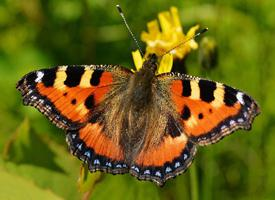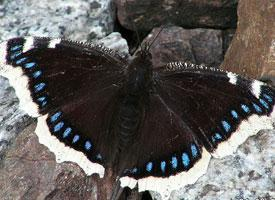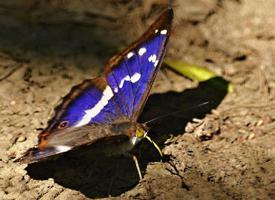
Állatleírás
The Map (Araschnia levana) is a fascinating and unique species of butterfly that belongs to the family Nymphalidae. This intriguing insect is primarily found across Europe and parts of Asia, showcasing a remarkable ability to adapt to its surroundings. What makes the Map butterfly particularly special is its distinct seasonal dimorphism, meaning it exhibits two different forms depending on the season, a rare trait in the butterfly world.In spring, the Map butterfly emerges in its first form, known as the levana form. This spring morph is characterized by its orange wings adorned with black markings. The upper side of the wings features a pattern that somewhat resembles a map, hence the name. These black markings are not just for show; they play a crucial role in thermoregulation and predator avoidance. The underside of the wings, which is seen when the butterfly is at rest, displays a cryptic pattern that camouflages it against predators.
As the seasons change and summer approaches, the Map butterfly undergoes a complete transformation for its second brood, known as the prorsa form. This summer morph is strikingly different, with the upper side of the wings showcasing a much darker color palette, dominated by black and a beautiful array of white and blue spots. This dramatic change in appearance is thought to be an adaptation to the different environmental conditions and threats present in the summer months.
The lifecycle of the Map butterfly begins with the female laying eggs on the underside of the leaves of specific host plants, usually species of the nettle family (Urticaceae), which the caterpillars feed on after hatching. The caterpillars are small and inconspicuous, with a coloration that helps them blend into their surroundings to avoid predation. After completing their growth, the caterpillars pupate, emerging as adults ready to continue the cycle.
Map butterflies typically inhabit open woodlands, meadows, and forest edges, where their host plants are plentiful. Their preference for diverse habitats with abundant sunlight and vegetation reflects their need for specific microclimates conducive to their lifecycle and seasonal forms.
Despite their beauty and fascinating biology, Map butterflies, like many other species, face threats from habitat loss and climate change. Changes in land use, agricultural practices, and global temperature shifts can impact their survival, making conservation efforts important for maintaining their populations.
In summary, the Map (Araschnia levana) is a remarkable butterfly species known for its seasonal dimorphism, showcasing two distinct forms that allow it to thrive in the varying conditions of its European and Asian habitats. Its lifecycle, from egg to caterpillar to butterfly, is a testament to the adaptability and resilience of nature. With their striking appearances and intriguing behaviors, Map butterflies continue to captivate and inspire those who are fortunate enough to encounter them in the wild.
Hasonló állatok
Új állatfotók
Top 10 állat
- Dolphin gull (Leucophaeus scoresbii)
- Japanese macaque (Macaca fuscata)
- Stone loach (Barbatula barbatula)
- Russian tortoise (Testudo horsfieldii)
- Galápagos tortoise (Geochelone nigra complex)
- Greek tortoise (Testudo graeca)
- Diana monkey (Cercopithecus diana)
- Common flying dragon (Draco volans)
- Moustached guenon (Cercopithecus cephus)
- Galápagos penguin (Spheniscus mendiculus)


